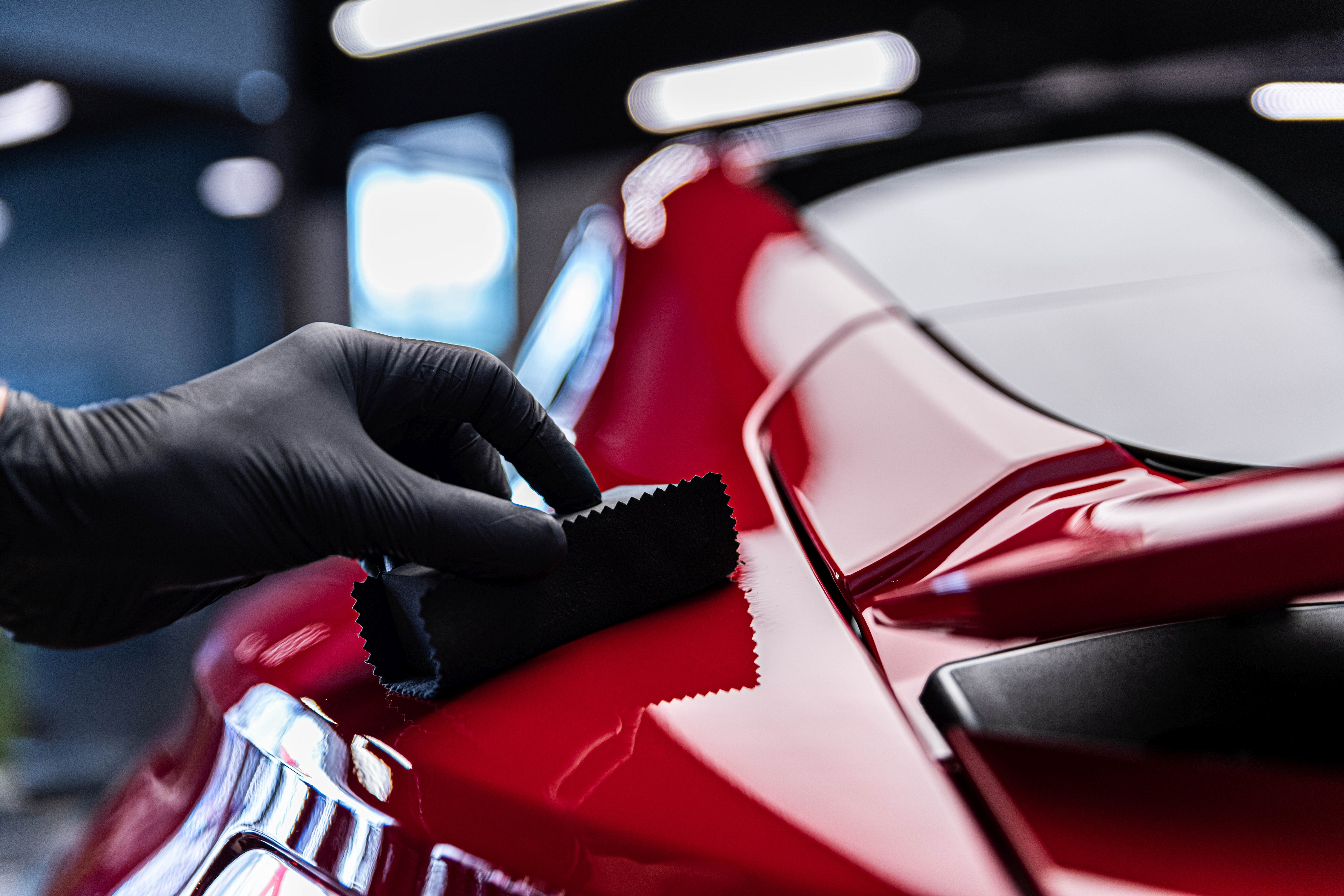A Comprehensive Overview to the Kinds of Ceramic Coating on the marketplace
Ceramic coverings have become a pivotal service across numerous sectors as a result of their one-of-a-kind properties and applications. From silica-based solutions recognized for their robustness to hybrid choices that merge several benefits, the options readily available can be frustrating. Recognizing the subtleties of each type, including their specific advantages and perfect usage cases, is important for making informed decisions. As we explore the unique qualities and applications of these finishings, the ramifications for efficiency and long life become progressively noticeable, raising questions regarding which kind could best match your requirements.
Comprehending Ceramic Coatings
Ceramic finishes are innovative protective remedies that have acquired popularity in different sectors, especially in aerospace and vehicle applications. These finishes contain a liquid polymer that, when treated, forms a resilient, hydrophobic layer externally of the substratum. This layer offers enhanced resistance to ecological contaminants, UV radiation, and chemical exposure, thus expanding the life and visual allure of the underlying material.
The basic element of ceramic coverings is silica, which adds to their firmness and durability. The application process commonly includes surface area prep work, application of the covering, and treating, which can be achieved with warmth or UV light. Once healed, ceramic coverings show extraordinary bonding residential or commercial properties, permitting them to stick highly to a range of surface areas, including steels, plastics, and glass.
Along with their safety attributes, ceramic coverings also supply simplicity of upkeep. Their hydrophobic nature decreases the adherence of dirt and crud, making cleansing easier and much less constant. Generally, the fostering of ceramic coverings stands for a significant advancement in surface area protection innovation, providing both aesthetic and useful benefits throughout several sectors.
Sorts Of Ceramic Coatings
Different kinds of ceramic coverings are offered, each developed to satisfy particular efficiency needs and applications. The most usual kinds include:
Silica-based Coatings, these finishings mainly contain silicon dioxide and are understood for their longevity and chemical resistance. They are widely used in auto and commercial applications.
Titanium Dioxide Coatings: Popular for their photocatalytic homes, titanium dioxide coatings are commonly applied in environments where self-cleaning and antifungal residential properties are preferable, such as in structure materials and automotive coatings.
Zirconia Coatings are characterized by their high-temperature stability and thermal resistance, zirconia finishings are made use of in applications such as generator engines and high-performance auto parts.
Alumina Coatings, Displaying excellent firmness and thermal stability, alumina coatings are often made use of in wear-resistant applications, consisting of reducing devices and commercial machinery.
Hybrid Coatings:Combining the properties of numerous materials, crossbreed layers offer improved efficiency attributes, making them ideal for special and requiring applications.
Each kind of ceramic covering offers distinctive objectives, allowing individuals to pick the most suitable solution based upon details environmental problems and efficiency requirements.
Advantages of Ceramic Coatings

Along with durability, ceramic finishes provide superb hydrophobic buildings, allowing for very easy cleaning my latest blog post and upkeep. This water-repellent nature minimizes the adherence of dust, gunk, and various other contaminants, which can extend the aesthetic appeal and performance of the surface. Additionally, ceramic finishes can significantly enhance thermal resistance, making them optimal for applications that sustain heats.
Ceramic layers can add to power effectiveness by mirroring heat, which is especially useful in industrial and automobile setups. Overall, the numerous advantages of ceramic layers make them a valuable financial investment for numerous applications, guaranteeing optimum efficiency and protection.
Application Process
When using ceramic finishings, a meticulous approach is crucial to attain optimum outcomes. The application process generally begins with detailed surface prep work. This entails cleaning, sanitizing, and brightening the surface area to get rid of all contaminations, including dirt, oil, and prior waxes or sealants. A clean surface ensures correct attachment of the finishing.
As soon as the surface area is prepped, the following action is to use the ceramic covering. This can be done using an applicator pad or a microfiber cloth, guaranteeing even insurance coverage. It is essential to operate in small sections to maintain control and stop early healing - Ceramic Coating Denver. The coating needs to be used in thin layers, as thicker applications can cause uneven surfaces.
After application, the coating requires a certain healing time, usually varying from a few hours to a complete day, depending on the item. Adhering to these steps diligently will take full advantage of the performance and long life of the ceramic finishing, supplying a sturdy safety layer for the surface.
Upkeep and Long Life
To guarantee the long life and performance of a ceramic finish, regular maintenance is vital. Ceramic finishings, known for their durability and protective qualities, need specific care regimens to optimize their life-span and efficiency. The very first step in upkeep includes routine washing with pH-neutral soap, preventing rough chemicals that can deteriorate the covering. It is a good idea to clean the car regularly, ideally every two weeks, to protect against the build-up of impurities that can compromise the finishing's integrity.
In addition to normal washing, routine evaluations are critical. Look for signs of wear or damages, such as hydrophobic properties lessening or surface flaws. If required, a light polish might be related to invigorate the finishing without stripping it away.
In addition, the application of a booster spray can improve the layer's hydrophobic impacts and restore its gloss. This is specifically advantageous for coatings that have actually been in use for an extended duration. Eventually, by adhering to these upkeep practices, one browse this site can substantially prolong the life of a ceramic finishing, making sure that it remains to supply optimal protection against environmental aspects and maintain the Read Full Article aesthetic appeal of the vehicle.

Verdict
In conclusion, ceramic layers stand for a functional solution for a variety of applications, using a variety of kinds such as silica, titanium alumina, zirconia, and dioxide. Each type offers unique advantages, consisting of longevity, self-cleaning residential properties, high-temperature security, and put on resistance. The application procedure and recurring maintenance play crucial roles in taking full advantage of the longevity and efficiency of these finishes. On the whole, ceramic finishings contribute substantially to enhancing the resilience and functionality of various surface areas across numerous sectors.
Ceramic finishes have arised as an essential remedy throughout numerous industries due to their one-of-a-kind residential properties and applications.Ceramic layers are sophisticated protective options that have acquired appeal in numerous markets, specifically in vehicle and aerospace applications. Ceramic layers can substantially improve thermal resistance, making them optimal for applications that withstand high temperatures.
In general, the various benefits of ceramic finishes make them a useful investment for numerous applications, ensuring optimum efficiency and security.
In conclusion, ceramic finishings stand for a flexible service for a range of applications, offering a selection of types such as silica, titanium zirconia, alumina, and dioxide.
 Kelly McGillis Then & Now!
Kelly McGillis Then & Now! Michael J. Fox Then & Now!
Michael J. Fox Then & Now! Hailie Jade Scott Mathers Then & Now!
Hailie Jade Scott Mathers Then & Now! Nancy Kerrigan Then & Now!
Nancy Kerrigan Then & Now! Teri Hatcher Then & Now!
Teri Hatcher Then & Now!